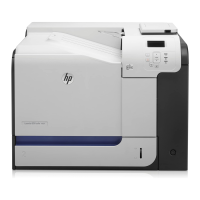FUP Commands
File Utility Program (FUP) Reference Manual—523323-014
2-132
LOAD
You need to understand when to use the COPY, DUP[LICATE], and LOAD commands:
in-filename
names the file containing the records to be loaded. This file can be a disk file, a
nondisk device, a process, a tape DEFINE name, an EDIT file, or a SPOOLER
(code 129) file. You cannot use wild-card characters in in-filename or specify
qualified-fileset.
destination-filename
specifies an existing disk file in which the records from in-filename are to be
loaded. You cannot use wild-card characters in destination-filename or
specify qualified-fileset for it. Any data already in
destination-filename is overwritten by the LOAD process.
EMPTYOK
accepts an empty file for in-filename. If the IN file is empty (and you do not
include the EMPTYOK option), the LOAD command terminates, and this message
appears:
ERROR - EMPTY SOURCE FILE
If you include EMPTYOK (and LOAD encounters an empty IN file), this message
appears:
RECORDS LOADED: 0
FIRST { ordinal-record-num }
{ KEY { record-spec | key-value } }
{ key-specifier ALTKEY key-value }
names the starting record of the input file for the copy. If you omit FIRST, the copy
starts with the first record of the input file.
ordinal-record-num
is the number of records (from the beginning of the file) that are to be skipped.
The first record in a file is record zero. If you specify this option for an
unstructured disk file, the copy begins at:
ordinal-record-num * in-record-length
COPY To change file attributes or copy files to or from nondisk devices
DUP[LICATE] To create identical copies of disk files
LOAD To create a structured disk file from scratch (much faster than COPY)
Note. The actual reading begins with the first record in the source file.

